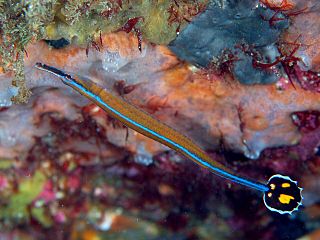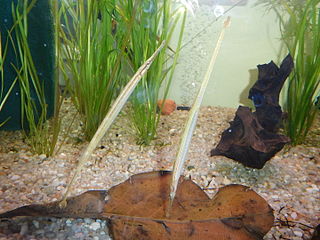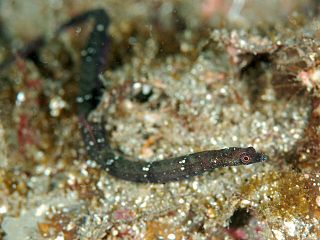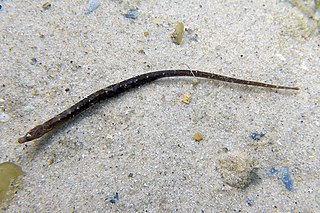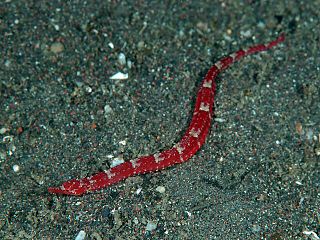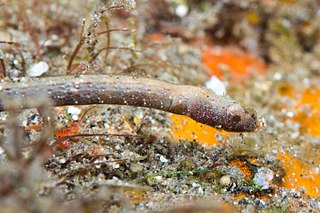| Nannocampus | |
|---|---|
| Scientific classification | |
| Kingdom: | Animalia |
| Phylum: | Chordata |
| Class: | Actinopterygii |
| Order: | Syngnathiformes |
| Family: | Syngnathidae |
| Subfamily: | Syngnathinae |
| Genus: | Nannocampus Günther, 1870 |
| Type species | |
| Nannocampus subosseus Günther, 1870 | |
| Synonyms | |
Mannarichthys Dawson, 1977 | |
Nannocampus is a genus of pipefishes native to the Indian and Pacific Oceans with these currently recognized species : [1]
A genus is a taxonomic rank used in the biological classification of living and fossil organisms, as well as viruses, in biology. In the hierarchy of biological classification, genus comes above species and below family. In binomial nomenclature, the genus name forms the first part of the binomial species name for each species within the genus.

Pipefishes or pipe-fishes (Syngnathinae) are a subfamily of small fishes, which, together with the seahorses and seadragons, form the family Syngnathidae.

The Indian Ocean is the third-largest of the world's oceanic divisions, covering 70,560,000 km2 (27,240,000 sq mi). It is bounded by Asia on the north, on the west by Africa, on the east by Australia, and on the south by the Southern Ocean or, depending on definition, by Antarctica.
- Nannocampus elegans J. L. B. Smith, 1953 (elegant pipefish)
- Nannocampus lindemanensis (Whitley, 1948) (painted pipefish)
- Nannocampus pictus (Duncker, 1915) (reef pipefish)
- Nannocampus subosseus Günther, 1870 (bony-headed pipefish)
- Nannocampus weberi Duncker, 1915 (reef-flat pipefish)
Nannocampus elegans, the elegant pipefish, is a species of pipefish native to the Western Indian Ocean.
Gilbert Percy Whitley was a British-born Australian ichthyologist and malacologist who was Curator of Fishes at the Australian Museum in Sydney for about 40 years. He was born at Swaythling, Southampton, England, and was educated at King Edward VI School, Southampton and the Royal Naval College, Osborne.
Nannocampus pictus, also known as the reef pipefish is a species of marine fish belonging to the family Syngnathidae. They can be found inhabiting reefs and seagrass beds of the western Indian Ocean and the eastern coast of Australia including the Great Barrier Reef. Members of this species can grow to lengths of 10 cm and their diet likely consists of small crustaceans such as copepods. Reproduction occurs through ovoviviparity in which the males brood eggs before giving live birth.

